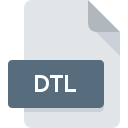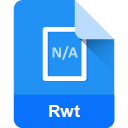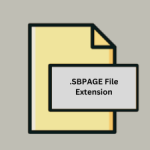.DTL File Extension

Now Contact Detail Template
| Developer | Now Software |
| Popularity | |
| Category | Page Layout Files |
| Format | .DTL |
| Cross Platform | Update Soon |
What is an DTL file?
.DTL file extension is associated with various applications and data types, typically representing detailed data files used in different software environments.
These files store detailed information, often used in specialized fields such as mapping, project management, and database applications.
This article delves into the origin, history, file structure, technical specifications, advantages, disadvantages, and methods to open and convert .DTL files on various operating systems.
More Information.
The initial purpose of the .DTL file extension was to provide a means of storing detailed information in a consistent and accessible manner.
Early adopters of this file format included GIS (Geographic Information Systems) and project management tools, which required detailed data storage for efficient data manipulation and retrieval.
Over time, the usage of .DTL files expanded to other domains, including database management systems and specialized software applications.
Origin Of This File.
The .DTL file extension has been adopted by multiple software applications over the years, each utilizing it for storing detailed information pertinent to their functionality.
One common association is with data modeling and mapping software, where .DTL files store intricate details about models or maps.
The origin of this file format is rooted in the need for a standardized way to store and manage detailed data in a structured format.
File Structure Technical Specification.
The structure of .DTL files can vary significantly depending on the application that created them. Common elements include:
- Header: Contains metadata about the file, such as version, creation date, and software application.
- Body: The main content of the file, which includes detailed data entries. This section is typically structured in a tabular or hierarchical format, depending on the nature of the data.
- Footer: Optional section that may include checksums, end-of-file markers, or additional metadata.
Technical specifications of .DTL files often depend on the application and may include:
- File Size: Can range from a few kilobytes to several megabytes, depending on the amount of data stored.
- Data Encoding: Typically encoded in ASCII or binary format, based on the requirements of the software application.
- Compatibility: Designed to be compatible with specific versions of the software application that created it.
How to Convert the File?
Converting .DTL files to other formats can be accomplished using various software tools. The steps involved typically include:
- Identify the Source Application: Determine which software application created the .DTL file.
- Export Functionality: Use the export or save-as feature in the software to convert the .DTL file to a different format (e.g., CSV, XML, or JSON).
- Use Conversion Tools: Utilize third-party file conversion tools or online services that support .DTL file conversion.
Some popular tools and methods include:
- GIS Software: Use GIS software like ArcGIS or QGIS to export .DTL files to other geospatial data formats.
- Database Management Systems: Use database export functions to convert .DTL files to formats like CSV or SQL.
- Online Converters: Employ online file conversion services that support .DTL to other formats.
Advantages And Disadvantages.
Advantages:
- Detailed Data Storage: Provides a comprehensive way to store detailed information, making it ideal for complex data management tasks.
- Standardization: Offers a standardized format for detailed data, ensuring consistency across different software applications.
- Compatibility: Widely supported by various applications, making it a versatile file format for detailed data storage.
Disadvantages:
- Complexity: The detailed nature of .DTL files can make them complex and difficult to manage without appropriate software.
- Software Dependency: Often requires specific software applications to open and manipulate the data, limiting accessibility.
- File Size: Can become large and unwieldy, especially when storing extensive detailed data.
How to Open DTL?
Open In Windows
- Install the Required Software: Ensure you have the appropriate software application installed (e.g., GIS software, database management tool).
- Open the File: Use the software’s file-open dialog to locate and open the .DTL file.
- View and Edit: Utilize the software’s features to view and edit the detailed data.
Open In Linux
- Open Source Tools: Use open-source tools and software available for Linux that support .DTL files.
- Install the Software: Install the necessary software using package managers like apt or yum.
- Open and Edit: Open the .DTL file using the installed software and perform the necessary tasks.
Open In MAC
- Check Compatibility: Verify that the software application is compatible with macOS.
- Install the Software: Download and install the macOS version of the required software.
- Open the File: Use the software to open and manipulate the .DTL file.












